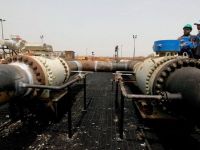Dubai hotels barely broke even in July as occupancy levels slid by 4.6 percentage points to 50.3 percent due to low demand during the annual summer slowdown and the holy month of Ramadan, according to a latest report.
The HotStats survey of full-service four- and five-star hotels by TRI Consulting said the Dubai hotel market achieved a nominal 1.1 percent increase in average room rates, or ARR, to $202.94, which was second-highest in the region after Riyadh at $214.91. However, the emirate’s year-to-date occupancy levels and profit margins stayed strong at 79.4 and 46.4 percent, respectively.
Hoteliers also noted 7.4 percent plunge in revenue per available room, or RevPar, in July while shrinking food and beverage revenues led to a significant damage to gross operating profit per available room, or Goppar, that slipped by 99.5 percent to $0.07, resulting in hotels barely covering operational expenses.
“Dubai hotels were impacted from the collective effect of the annual summer slowdown and the occurrence of the holy month of Ramadan throughout the entire month of July, resulting in occupancy levels falling to 50.3 percent. This had a trickle-down effect on the profitability of hotels especially with significantly lower food and beverage revenues during the month,” Peter Goddard, managing director of TRI Consulting in Dubai, said in a statement to Khaleej Times.
He said hotels only marginally broke even as high fixed-operating costs resulted in Goppar dropping to $0.07. “Although performance was down in July, the overall market remains strong with year-to-date occupancy levels averaging 79.4 percent and profit margins at 46.4 percent,” Goddard said.
The HotStats survey further revealed that average room rates in Abu Dhabi increased by 5.1 percent in July to $114.10, driven by a 4.5 percent growth in RevPar to $57.36. The growth in ARR was due to a shift in yield strategies from hoteliers as a response to strong overall occupancy levels.
The growth in room revenues was complemented by an increase in banqueting revenues, resulting in a 2.5 percent growth in top-line revenues to $136.41. However, a marginal decrease in operating expenses was not sufficient to prevent hotels from running a loss during July, with Goppar levels of -$12.44.
“Although the hotels in Abu Dhabi recorded a trading loss during July, the market is witnessing encouraging indicators, especially with a revival in average rate performance,” Goddard said,
He said the market has suffered from a steady decline in average rates since August 2011, however this trend is starting to reverse with hotels undergoing a steady growth in average rates during the past five months, fuelled by strong regional visitor demand.
“We expect this trend to continue throughout the remainder of the year, especially as hoteliers gear up for the peak season” he said.
In another report, STR Global said the Middle East and Africa region recorded positive performance in July 2014 when reported in U.S. dollars. The region reported a 0.9 percent increase in occupancy to 49.3 percent, a 6.9 percent increase in average daily rate, or ADR, to $156.54 and a 7.9 percent increase in RevPar to $77.15.
“On a 12-month-moving-average basis, supply and demand growth are on par at 2.8 percent, which means occupancy growth is flat, at 61.4 percent,” said Elizabeth Winkle, managing director of STR Global.
Highlighting the MEA region’s key markets’ performance, the report said Cairo and Cape Town reported the largest occupancy increases in July while Amman posted the largest decrease of 20.2 per cent in that metric, followed by Nairobi at 16 per cent.
In terms of average daily rates, Jeddah recorded 12.5 percent increase in ADR to $286.28, achieving the only double-digit increase in that metric. However, Nairobi (-5.4 percent to $141.62) and Riyadh (-4.8 percent to $207.05) posted the largest ADR decreases.
“Ramadan occurred entirely in July, which resulted in lower than usual levels of demand in what is typically the region’s weakest month of the year. The confluence of these factors resulted in lower than average performance for the month. We view this as an anomaly and would expect performance to improve in August,” Winkle said.
“In the holy cities of Makkah and Madinah, where both typically welcome an influx of travellers during this time, we saw occupancy growth well over 20 percent for both markets in July. Makkah also saw a strong ADR increase, up 23.1 percent in July,” she said.
The STR Global report further said three markets — Cairo, Manama and Cape Town — experienced RevPar growth of more than 15 per cent. Amman’s RevPar fell 21.4 percent to $54.86, posting the largest decrease in that metric. Nairobi followed with a 20.5 percent decrease to $78.29.
Meanwhile, the STR Global Construction Pipeline report for July said the MEA hotel region reported 630 hotels under contract totalling 147,754 rooms.
Among the chain scale segments, the upper upscale segment account for the largest portion of rooms under contract in the region (36.4 per cent) with 53,794 rooms. Three other segments each made up more than 10 per cent of rooms under contract: the upscale segment (18.6 percent with 27,431 rooms), the luxury segment (18.5 percent with 27,264 rooms) and the unaffiliated segment (13.9 per cent with 20,577 rooms).
The upper upscale segment made up the largest portion of rooms under construction (37.3 percent with 25,337 rooms), followed by the luxury segment (21.4 percent with 14,559 rooms) and the upscale segment (19.8 percent with 13,485 rooms).
The under-contract data includes projects in the in construction, final planning and planning stages but does not include projects in the unconfirmed stage.
By Muzaffar Rizvi








